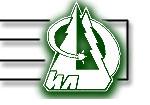
Laboratory of Ecophysiology of Permafrost Systems
 |
V.N. Sukachev Institute of Forest Laboratory of Ecophysiology of Permafrost Systems |
|
|
Study Site Samoylov Island
Biome: Tundra
The overgrown parts of the flood plain are characterised by the Salix-Equisetum-Alopecurus alpinus community, dominated by willow shrubs (Salix glauca, S. lanata and S. reptans),
horsetail (Equisetum), Poaceae (Alopecurus alpinus, Festuca rubra, Deschampsia borealis) and Tanacetum bipinnatum. 
Fig. 1. (a) Circumpolar permafrost distribution (Brown et al., 1998) and the Lena River Delta. (b) Location of the Samoylov study site within the Lena River Delta, Eastern Siberia (NASA, 2000) 
Fig. 2. Land cover classes on Samoylov Island. Classification of the eastern part of the island is based on Muster et al. (2012). The western part, which is non-vegetated or dwarf shrub tundra, is subject to flooding by the Lena River during spring. Overgrown water and wet and dry tundra were only classified for a subset of the terrace. The classification is overlain on the 2007 VIS orthophoto (grey colour) (Boike et al., 2013). 
Fig. 3. Photos of three typical soils at Samolyov Island. (a) Typic Psammorthel, floodplain, natural levee, 2001; (b) Typic Aquiturbel, first terrace, polygon rim, 2012; (c) Typic Historthel, ?rst terrace, polygon centre, 2012 (Boike et al., 2013).
Sources of information: |